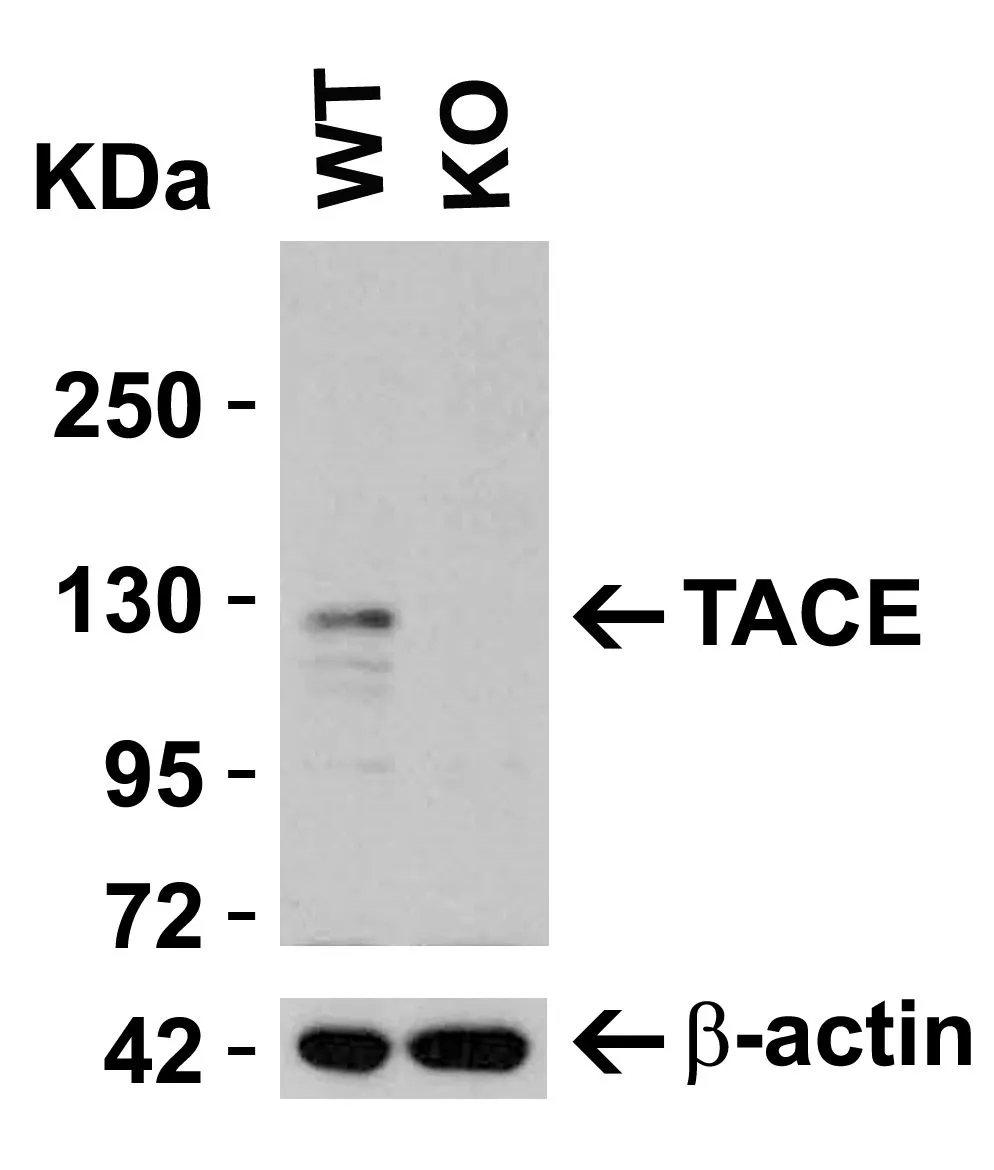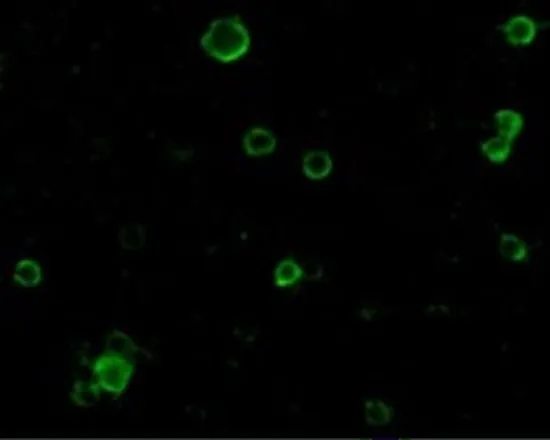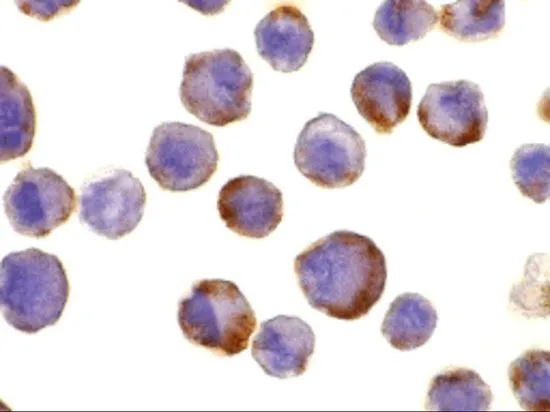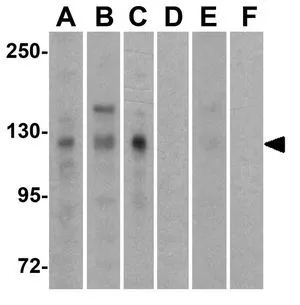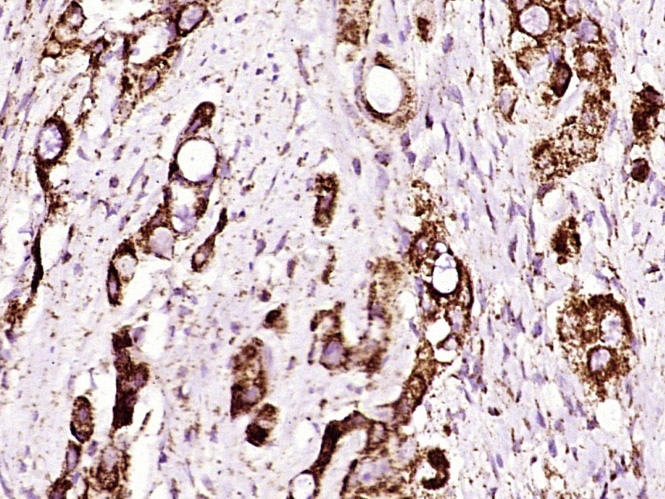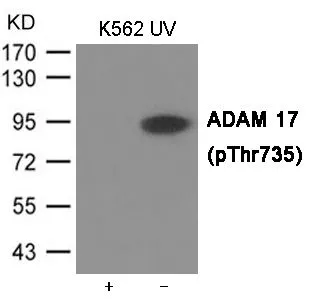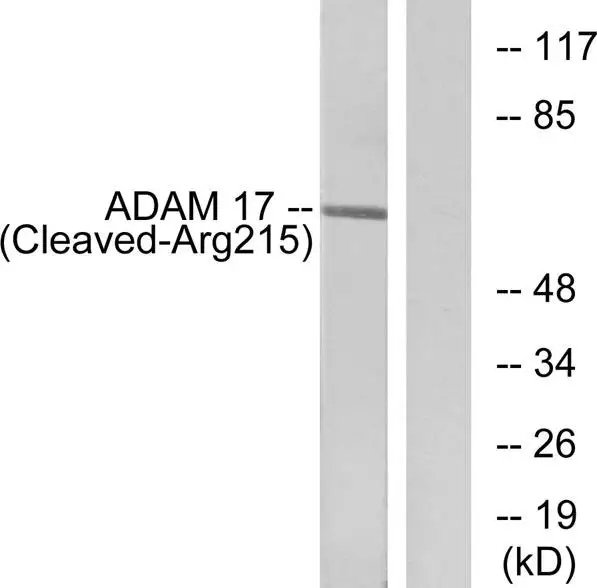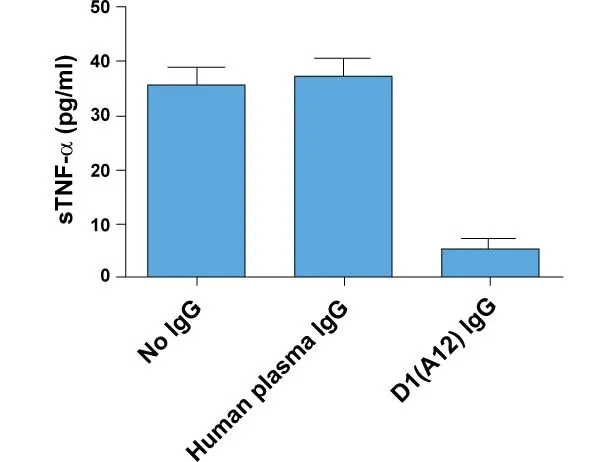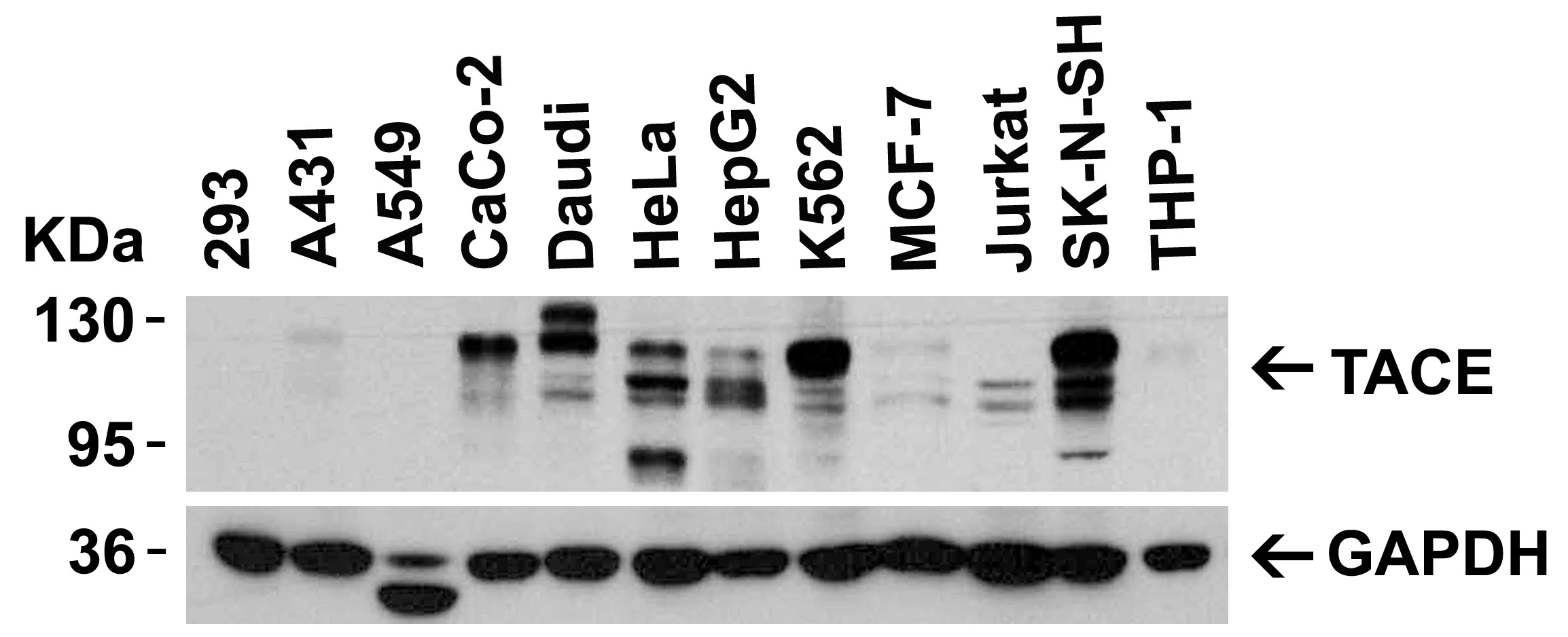
WB analysis of various sample lysates using GTX31632 ADAM17 antibody. Loading : 15microg of lysates per lane Dilution : 0.5 microg/ml
ADAM17 antibody
GTX31632
ApplicationsImmunoFluorescence, Western Blot, ELISA, ImmunoCytoChemistry
Product group Antibodies
TargetADAM17
Overview
- SupplierGeneTex
- Product NameADAM17 antibody - KO/KD Validated
- Delivery Days Customer9
- Application Supplier NoteWB: 0.5 microg/mL. ICC/IF: 10 microg/mL. *Optimal dilutions/concentrations should be determined by the researcher.Not tested in other applications.
- ApplicationsImmunoFluorescence, Western Blot, ELISA, ImmunoCytoChemistry
- CertificationResearch Use Only
- ClonalityPolyclonal
- Concentration1 mg/ml
- ConjugateUnconjugated
- Gene ID6868
- Target nameADAM17
- Target descriptionADAM metallopeptidase domain 17
- Target synonymsADAM18, CD156B, CSVP, NISBD, NISBD1, TACE, disintegrin and metalloproteinase domain-containing protein 17, ADAM metallopeptidase domain 18, TNF-alpha convertase, TNF-alpha convertase enzyme, TNF-alpha converting enzyme, a disintegrin and metalloproteinase 17, cartilage snake venom-like protease, snake venom-like protease, tumor necrosis factor, alpha, converting enzyme
- HostRabbit
- IsotypeIgG
- Protein IDP78536
- Protein NameDisintegrin and metalloproteinase domain-containing protein 17
- Scientific DescriptionThis gene encodes a member of the ADAM (a disintegrin and metalloprotease domain) family. Members of this family are membrane-anchored proteins structurally related to snake venom disintegrins, and have been implicated in a variety of biologic processes involving cell-cell and cell-matrix interactions, including fertilization, muscle development, and neurogenesis. The protein encoded by this gene functions as a tumor necrosis factor-alpha converting enzyme; binds mitotic arrest deficient 2 protein; and also plays a prominent role in the activation of the Notch signaling pathway. [provided by RefSeq, Jul 2008]
- Storage Instruction-20°C or -80°C,2°C to 8°C
- UNSPSC12352203

